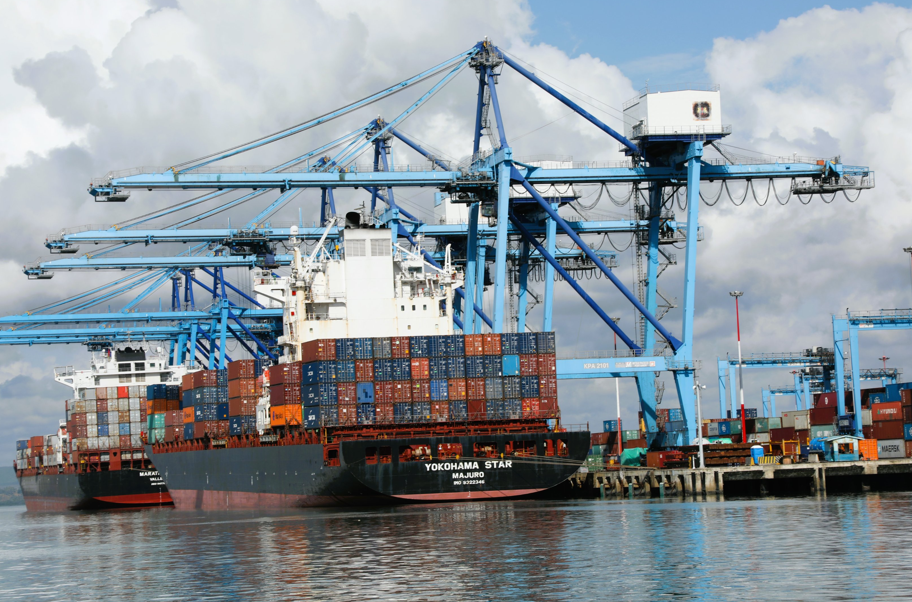
 Containers await clearance at the Port of Mombasa / FILE
Containers await clearance at the Port of Mombasa / FILEThe
Kenya Revenue Authority (KRA) has reported Sh85.1 billion in monthly customs
tax collection for September, a historic high.
This
has surpassed the earlier record of Sh82.6 billion realised in January 2025.
This
September, customs collections exceeded the monthly target of Sh81.3 billion by
Sh3.8 billion, achieving a performance rate of 104.7 per cent.
The
revenue agency has attributed the increased customs collection to a series of
reforms aimed at enhancing revenue collection efficiency.
The result
also marks a year-on-year growth of 18.8 per cent compared to the same period
in the previous financial year.
The
performance was driven by strong collections from trade taxes of Sh51.7 billion
against a target of Sh50.7 billion, reflecting a 22.1 per cent growth from the
corresponding period last year and a performance rate of 102 per cent, while
petroleum taxes recorded an exceptional 109.2 per cent performance rate by
collecting Sh33.4 billion against a target of Sh30.6 billion.
It has, for instance, cited the establishment of a central release operations
office.
Under
this innovative system, head verification officers operate from a central
location and randomly allocate release stations to verify and clear
goods.
"This
process has minimised human contact, ensuring more objective cargo release
decisions and closing potential revenue loopholes," KRA's Customs
commissioner, Lilian Nyawanda, said.
According
to her, the reform has significantly improved cargo release turnaround
times.
"These
outstanding results underscore KRA’s unwavering commitment to continuously
improve tax collection systems and processes to meet revenue targets
consistently."
The
revenue authority has, in the past three years, introduced high-tech solutions to
increase clearance efficiency.
In 2022, it installed two more drive-through scanners at the
Port of Mombasa to complement the Standard Gauge Railway drive-through scanner
and three other fixed scanners.
The new scanners will now enable KRA to scan 100 per cent per
cent containerized cargo imported and exported through the Port of Mombasa.
The non-intrusive equipment will enhance global trade
facilitation and promote the integrity of the supply chain by detecting
concealed and mis-declared cargo, which not only creates unfair competition but also poses a risk to the security and safety of society.
The
drive-through scanners can scan more than a hundred 20-foot containers per hour.
It
takes a few seconds to scan a container, unlike the scenario with fixed
scanners, which have a performance of approximately six minutes per container
and an average of 10 containers per hour.
The
Rift Valley region contributed immensely to the growth, which translates to a collection
of close to Sh3 billion, courtesy of increased activities at the Eldoret International
Airport.
Abdi Malik, KRA chief manager, Customs and
Border Control, Rift Valley, the elevation of Eldoret to a city status has
activated social and economic activities in the region, with the airport surpassing
its revenue collection for the first three months of the year.
In the first quarter
of the current financial year, EIA collected Sh567 million against a target of
Sh458.64 million, achieving a performance rate of 123.65 per cent, with a
surplus of Sh108.4 million.
The airport shed
collected Sh1.803 billion against a target of Sh1.694 billion in the last
financial year, achieving an overall performance rate of 106.44 per cent and a
surplus of Sh109.06 million for the financial year 2024/2025.
Generally, the Rift Valley region, which
covers a wider region stretching from Naivasha, collected Sh3.1 billion
against a target of Sh2.62 billion, representing a performance of 118.4 per
cent in the past financial year.
Main revenue contributors for the region were the Eldoret International Airport (EIA), Car and General in Nakuru, and the Jumbo AAA at the Naivasha Special Economic Zone.












